Related Research Articles

Luca Cordero di Montezemolo is an Italian businessman who is best known as former chairman of Ferrari, and formerly Chairman of Fiat S.p.A. and President of Confindustria and FIEG.

Ernesto Schiaparelli was an Italian Egyptologist.

Seven Hills of Rome is an Italian-American film international co-production released in January 1958 and shot on location in Rome and at the Titanus studios. It was filmed in Technicolor and Technirama, distributed by Metro-Goldwyn-Mayer, was tenor Mario Lanza's penultimate film, and Marisa Allasio’s last film.
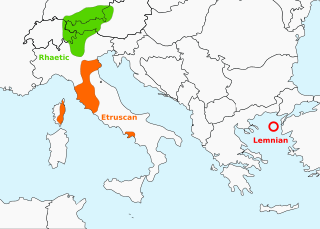
Tyrsenian, named after the Tyrrhenians is a proposed extinct family of closely related ancient languages put forward by linguist Helmut Rix in 1998, which consists of the Etruscan language of northern, central and south-western Italy, and eastern Corsica (France); the Raetic language of the Alps, named after the Rhaetian people; and the Lemnian language of the Aegean Sea. Camunic in northern Lombardy, between Etruscan and Raetic, may belong to the family as well, but evidence of such is limited. The Tyrsenian languages are generally considered Pre-Indo-European and Paleo-European.
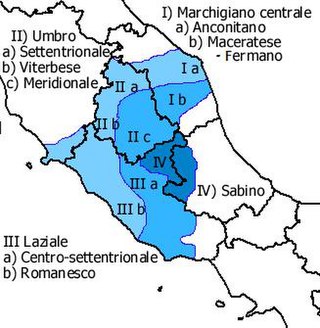
Romanesco is one of the central Italian dialects spoken in the Metropolitan City of Rome Capital, especially in the core city. It is linguistically close to Tuscan and Standard Italian, with some notable differences from these two. Rich in vivid expressions and sayings, Romanesco is used in a typical diglossic setting, mainly for informal/colloquial communication, with code-switching and translanguaging with the standard language.

Leporano is a town and comune in the province of Taranto, in the Apulia region of southeast Italy. The municipality of Leporano is a little maritime town at the Ionian Sea.

San Vito al Tagliamento is a comune (municipality) in the Regional decentralization entity of Pordenone, in the Italian region of Friuli-Venezia Giulia, located about 80 kilometres (50 mi) northwest of Trieste and about 20 kilometres (12 mi) southeast of Pordenone.
The Treaty of Casalanza, which ended the Neapolitan War, was signed on 20 May 1815 between the Napoleonic Kingdom of Naples on the one hand and the Austrian Empire, as well as the Great Britain, on the other. The signature occurred in a patrician villa, owned by the Lanza family, in what is now the commune of Pastorano, Campania, southern Italy.
Carlo Anti was an archaeologist and an officer in the army in the First World War and until 1922.
The Right group, later called Historical Right by historians to distinguish it from the right-wing groups of the 20th century, was an Italian conservative parliamentary group during the second half of the 19th century. After 1876, the Historical Right constituted the Constitutional opposition toward the left governments. It originated in the convergence of the most liberal faction of the moderate right and the moderate wing of the democratic left. The party included men from heterogeneous cultural, class, and ideological backgrounds, ranging from British-American individualist liberalism to Neo-Hegelian liberalism as well as liberal-conservatives, from strict secularists to more religiously-oriented reformists. Few prime ministers after 1852 were party men; instead they accepted support where they could find it, and even the governments of the Historical Right during the 1860s included leftists in some capacity.

The Museo di Roma is a museum in Rome, Italy, part of the network of Roman civic museums. The museum was founded in the Fascist era with the aim of documenting the local history and traditions of the "old Rome" that was rapidly disappearing, but following many donations and acquisitions of works of art is now principally an art museum. The collections initially included 120 water-colours by the nineteenth-century painter Ettore Roesler Franz of Roma sparita, "vanished Rome", later moved to the Museo di Roma in Trastevere.
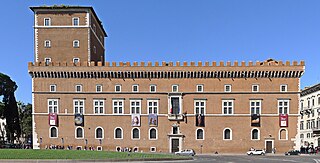
The Museo Nazionale del Palazzo di Venezia is a state museum in Rome (Italy), housed in the palace of the same name together with the important Library of Archaeology and Art History.
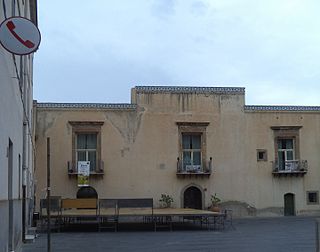
Palazzo Trabia is a historic building in Santo Stefano di Camastra, in the province of Messina in Italy. It is currently home to the Civic Museum of Ceramics.

Nicola De Giosa was an Italian composer and conductor active in Naples. He composed numerous operas, the most successful of which, Don Checco and Napoli di carnevale, were in the Neapolitan opera buffa genre. His other works included sacred music and art songs. His songs were particularly popular, bringing him fame as a salon composer both in Italy and abroad. De Giosa died in Bari, the city of his birth, at the age of 66.

The National Archaeological Museum of the Marches is an archaeological museum in Ancona, Marches, Italy. It is located in the Palazzo Ferretti, and 13,195 people visited the collections in 2015.
I, His Father is a 1939 Italian sports drama film directed by Mario Bonnard and starring Erminio Spalla, Mariella Lotti and Clara Calamai.

Secondina Lorenza Eugenia Cesano was an Italian numismatist and professor of numismatics at the Sapienza University of Rome.
Benedetto Lanza was an Italian herpetologist and chiropterologist. He published over 500 works, with the first one being published in 1946. He described 68 new taxa. He was Professor of Biology and Director of the Natural History Museum at the Università degli Studi di Firenze.
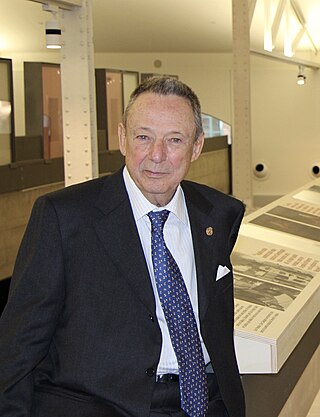
Gioacchino Lanza Tomasi, born Gioacchino Lanza Branciforte Ramirez, was an Italian musicologist and academic. He directed a number of cultural institutions, including the Teatro di San Carlo, the Teatro dell'Opera di Roma, and the Istituto Italiano di Cultura in New York.
References
- ↑ Špikić, Marko (2007). "Carlo Lanza, prvi ravnatelj Arheološkoga Muzeja u Splitu" [Carlo Lanza, the first director of the Archaeological Museum in Split]. Kulturna baština (in Croatian) (34): 373–388.